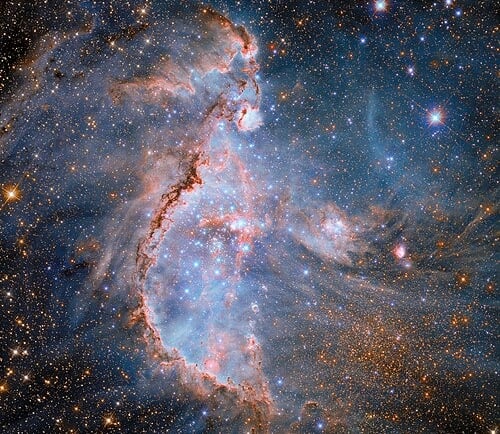NGC 346: The Young Open Cluster in the Small Magellanic Cloud


Introduction to NGC 346
NGC 346 is a fascinating astronomical object that captivates both amateur astronomers and professional scientists alike. Located in the southern constellation Tucana, NGC 346 is a young open cluster of stars that is prominently associated with a nebula. This cluster is situated within the Small Magellanic Cloud (SMC), a satellite galaxy of our Milky Way and one of the closest galaxies to Earth. Understanding NGC 346 offers insights into stellar formation and the dynamics of star clusters.
The Characteristics of NGC 346
One of the striking features of NGC 346 is its relatively young age, which is estimated to be around 3-4 million years. This youth gives us a unique opportunity to study the processes involved in star formation. The cluster hosts a rich environment where new stars are being born amidst the colorful nebular gas. The nebula associated with NGC 346 is rich in hydrogen, helium, and traces of heavier elements, which are essential for the formation of stars. The bright stars within the cluster illuminate the surrounding nebula, creating a spectacular view that has been captured in many astronomical photographs.
The Significance of NGC 346 in Astronomy
NGC 346 is more than just a collection of stars; it is a key area of research for astrophysicists studying stellar evolution and galactic dynamics. The presence of young and hot stars provides a laboratory for observing early stages of stellar life, including massive stars that eventually evolve into supernovae. Additionally, the spatial arrangement and interaction of the stars in NGC 346 can shed light on the mechanics of star formation in irregular galaxies, which differ markedly from spiral galaxies like our own.
The proximity of NGC 346 within the SMC also allows for detailed observations using various instruments, including ground-based telescopes and space observatories. These observations have revealed a wealth of information regarding the ages and compositions of the stars in the cluster, paving the way for better understandings of cosmic history.
Conclusion
In summary, NGC 346 serves as a crucial element in the study of astrophysics, particularly in the context of stellar formation and evolution. Its youthful characteristics, set against the backdrop of the Small Magellanic Cloud, make it a compelling subject for further observation and research. As our observational technologies advance, there is no doubt that NGC 346 will continue to unveil its secrets, enriching our understanding of the universe and the fundamental processes driving its evolution.
